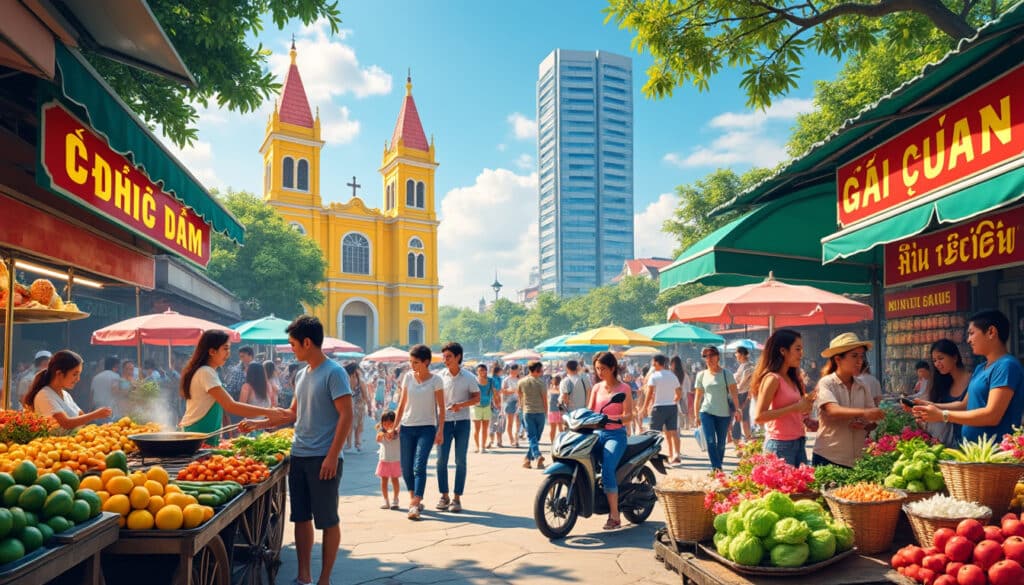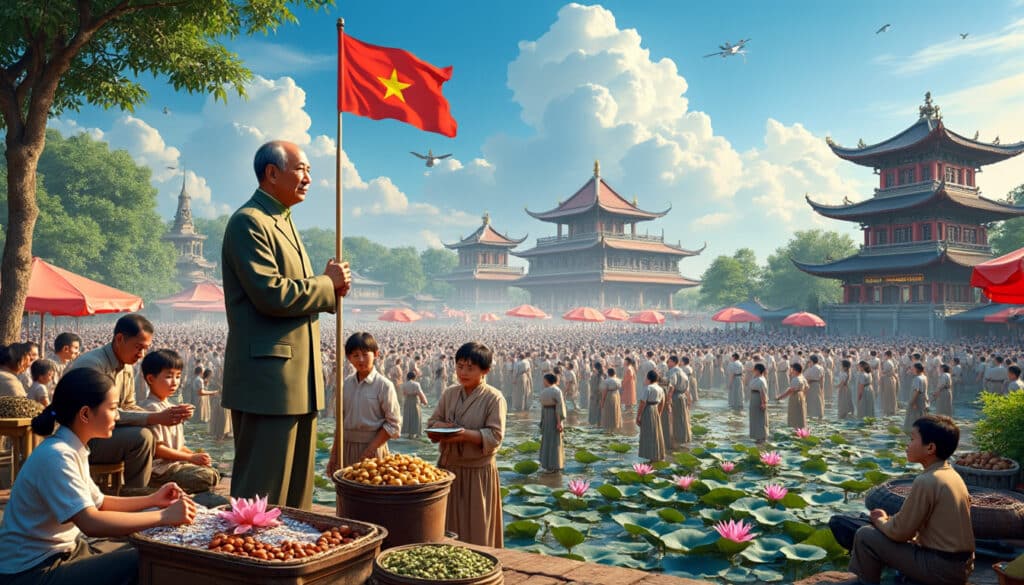The legacy of Ho Chi Minh is deeply interwoven with the identity and history of Vietnam. Known by many names and represented by various flags throughout his life, Ho Chi Minh remains an iconic figure whose influence extends beyond Vietnam. His journey from Nguyen Sinh Cung to becoming “Uncle Ho” is a story of transformation, revolution, and legacy. This article delves into the various facets of Ho Chi Minh’s identity, his role in shaping the nation’s flag, and how these elements contribute to Vietnam’s national identity.
The Many Names of Ho Chi Minh: Unraveling His Identity
Ho Chi Minh’s life is a tapestry woven with multiple names, each reflecting different phases of his revolutionary journey. Born as Nguyen Sinh Cung on May 19, 1890, in the village of Hoàng Trù, his early years were spent absorbing the rich cultural heritage of his homeland. However, as he embarked on his mission for Vietnam’s independence, his identity evolved with each alias he adopted.
Nguyen Tat Thanh: At the age of 10, following a Confucian tradition, his father gave him the name Nguyen Tat Thanh, meaning “accomplished” or “success.” This name carried him through his formative years, encapsulating his aspirations and potential.
Nguyen Ai Quoc: As he deepened his involvement in political activism, Ho Chi Minh used the pseudonym Nguyen Ai Quoc, translating to “Nguyen the Patriot.” It was under this name that he began to rally against French colonial rule, gaining recognition and respect among Vietnamese nationalists.
Ho Chi Minh: The name by which he is most famously known, Ho Chi Minh, means “He Who Enlightens” in Vietnamese. This name, adopted in 1940, became synonymous with the hope and determination for Vietnamese independence and unity. It was during this period that he solidified his vision for Vietnam as a sovereign nation.
Other Aliases: Ho Chi Minh used numerous other pseudonyms during his lifetime, such as Văn Ba while working on a French steamer and Ly Thuy during his time in China. These names reflect the clandestine nature of his work and his adaptability in various political and cultural contexts.
Each name Ho Chi Minh adopted was a strategic move to protect his identity and keep his revolutionary activities covert, reflecting his adaptability and strategic foresight. As a multifaceted leader, his identity became a unifying symbol for those fighting for Vietnam’s independence.
The legacy of these names continues to influence modern Vietnam, where streets, schools, and institutions bear his many names, hence maintaining his presence in the nation’s cultural consciousness as a figure of inspiration and national pride.
The Significance of Names in Vietnamese Culture
In Vietnamese culture, names are more than identifiers; they carry deep meanings and reflect familial hopes, cultural values, and historical narratives. Ho Chi Minh’s names encapsulate his journey from a young scholar to an emblem of national unity and resistance. They are a testament to the power of identity in shaping historical and cultural narratives.
Today, Ho Chi Minh’s legacy is preserved not just in national consciousness but also in Ho Chi Minh City, a bustling hub of commerce and culture named in his honor. Tourists and residents alike are reminded of his enduring impact, with landmarks such as the Bitexco Financial Tower symbolizing Vietnam’s modern aspirations balanced with its historical roots.
For more intriguing facts about Ho Chi Minh’s impact, one can explore resources here

The Flag That Unites: Symbolism in Vietnamese Identity
The Vietnamese flag, known for its vibrant red field and golden star, represents the unity and strength of Vietnam under Ho Chi Minh’s leadership. This symbol holds a significant place in the narrative of Vietnam’s struggle for independence and its subsequent nation-building. The flag, like Ho Chi Minh’s names, evolved to become a symbol of hope and resistance against colonial oppression.
Originally, the design of the flag was meant to embody the collective solidarity of the people. The red background symbolizes the blood shed in the struggle for independence, while the golden star with five points represents the unity of workers, peasants, soldiers, intellectuals, and young people in building socialism. This inclusive symbolism was strategically chosen to embody the principles that Ho Chi Minh championed.
During the August Revolution of 1945, Ho Chi Minh proclaimed the independence of Vietnam, and this flag became the official flag of the Democratic Republic of Vietnam. The adoption of this emblem was a pivotal moment in Vietnamese history, symbolizing both a break from colonial dominance and the beginning of self-determined governance.
Changes Over Time and Continued Significance
Despite the various challenges and transformations Vietnam has undergone, the flag has remained a constant, adapting in minor ways to reflect the country’s evolving identity. In 1975, following the reunification of North and South Vietnam, the flag was adopted as the official flag of the Socialist Republic of Vietnam, cementing its role as a national symbol.
The endurance of this flag as a national symbol is a testament to Ho Chi Minh’s lasting influence on Vietnam’s national identity. It continues to wave across state buildings, schools, and Vietnamese embassies around the world, embodying a proud history of struggle and resilience.
- 🌟 Red Field: Represents the bloodshed and sacrifice for independence.
- 🌟 Golden Star: Symbolizes the unity of different societal sectors.
- 🌟 Five Points: Workers, peasants, soldiers, intellectuals, and youth.
This flag’s significance is woven into everyday life in Vietnam, where it is a common sight during national holidays and celebrations, affirming a collective national identity that Ho Chi Minh helped forge.
Interested in the intersection of history and architecture in Ho Chi Minh City? Explore more.
Ho Chi Minh’s Influence on Modern Vietnam
Ho Chi Minh’s vision continues to shape Vietnam’s modern identity, influencing its political landscape, economic policies, and cultural ethos. His strategic foresight and ideologies were instrumental in creating structures that have endured beyond their immediate historical context.
The policies initiated under his leadership laid the groundwork for Vietnam’s industrial and economic expansion. Today, companies such as VinaCapital, Vietnam Airlines, and Viettel align with Ho Chi Minh’s ethos of fostering socio-economic development.
His legacy also manifests in Vietnam’s educational and cultural commitments, emphasizing the importance of national identity in modernization. Institutions bearing his name continue to instill the values he championed in younger generations.
Economic Policies and Developments
Ho Chi Minh’s economic policies focused on agrarian reforms, which have evolved into comprehensive strategies for rural development and poverty reduction. The momentum created during his era has been critical in enabling Vietnam’s transition into a rapidly growing economy with significant contributions from sectors like agribusiness and information technology.
Modern conglomerates such as FPT Corporation and TH True Milk reflect the blend of innovative entrepreneurship and traditional values that Ho Chi Minh envisioned for Vietnam. These companies play vital roles in harnessing local talent and resources, driving Vietnam’s progress in the global arena.
| Company | Sector | Contribution |
|---|---|---|
| VinaCapital | Investment | Finance & Development |
| Vietnam Airlines | Aviation | Connectivity & Tourism |
| Viettel | Telecommunications | Digital Connectivity |
| FPT Corporation | IT Services | Technological Innovation |
These modern enterprises operate under principles that echo Ho Chi Minh’s vision, contributing to a sustainable and inclusive economic model.
Explore how the unique climate of Ho Chi Minh City can influence its economy and development here.
Influence on Vietnamese Culture and Society
Beyond politics and economy, Ho Chi Minh’s legacy is profoundly ingrained in the cultural and social fabric of Vietnam. His appreciation for Vietnamese heritage and his efforts to unify the country’s diverse communities have left a lasting impact on Vietnam’s cultural identity.
Ho Chi Minh’s writings and speeches often highlighted the importance of education and the arts in national development, fostering a cultural renaissance that continues to thrive. His poetic works have transcended generations, inspiring Vietnamese people to embrace their cultural roots.
Cultural festivals, educational initiatives, and public celebrations often pay homage to his ideas and ideals, signaling the deep respect with which he is regarded in Vietnam. This cultural reverence manifests in everyday activities, from street names to national holidays that celebrate his achievements and sacrifices.
Key Aspects of Cultural Influence
- 🎨 Promoting Arts: Encouraged the flourishing of traditional and modern arts.
- 🎓 Educational Reforms: Focused on literacy and educational accessibility.
- 🇻🇳 National Unity: Unified diverse ethnic communities under a shared Vietnamese identity.
This influence extends to the global stage, where figures inspired by Ho Chi Minh foster international cultural exchanges, further enriching Vietnam’s cultural tapestry. His impact is visible in the harmonious blending of tradition and modernity that characterizes modern Vietnam.
Interested in the local flavor and cuisine that define Ho Chi Minh City? Discover more.
Ho Chi Minh’s Legacy: A Global Symbol of Revolution
Ho Chi Minh’s influence extends beyond Vietnam’s borders, symbolizing the global struggle for independence and self-determination. Revered as a revolutionary leader, his vision and strategies are studied worldwide, continuing to inspire movements for freedom and equality.
In the years following Vietnam’s victorious reunification, Ho Chi Minh became an emblem of successful resistance against colonial powers. His strategies in guerrilla warfare and diplomatic negotiations have become case studies for revolutionaries and political leaders globally.
His life and works resonate particularly in regions with histories and struggles parallel to Vietnam’s, including many African and Latin American nations emerging from colonial rule. His writings, often reflecting on the themes of resistance and resilience, serve as timeless resources for those navigating the complexities of post-colonial statehood.
International Recognition and Influence
- 🌍 Revolutionary Tactics: A model for freedom movements worldwide.
- 📚 Wisdom in Writings: Continues to inspire and educate in global contexts.
- 🎖️ Symbol of Unity: Represents the shared aspirations of oppressed peoples.
Internationally, places and institutions are named after him, from streets in Russia to schools in Africa, reflecting his enduring legacy as a champion for change and justice.
As Vietnam progresses into the future, Ho Chi Minh’s principles continue to guide its development, ensuring his presence remains at the heart of Vietnamese identity and its global narrative.
For further details about the diverse facets of Ho Chi Minh’s influence, visit our fun facts section.
Frequently Asked Questions
| Question | Answer |
|---|---|
| Why did Ho Chi Minh have so many names? | Each name reflected different phases of his revolutionary journey and were often used to protect his identity. |
| What does the flag of Vietnam symbolize? | The red flag with a golden star symbolizes unity, revolution, and the various sectors of society contributing to national growth. |
| How is Ho Chi Minh’s legacy reflected in modern Vietnam? | His legacy is seen in Vietnam’s economic policies, cultural practices, and educational reforms, promoting unity and national identity. |
| What international impact did Ho Chi Minh have? | He inspired global movements for independence and remains a symbol of revolutionary success. |
| Where can I learn more about Ho Chi Minh? | Visit our guide for more information on his life and legacy. |
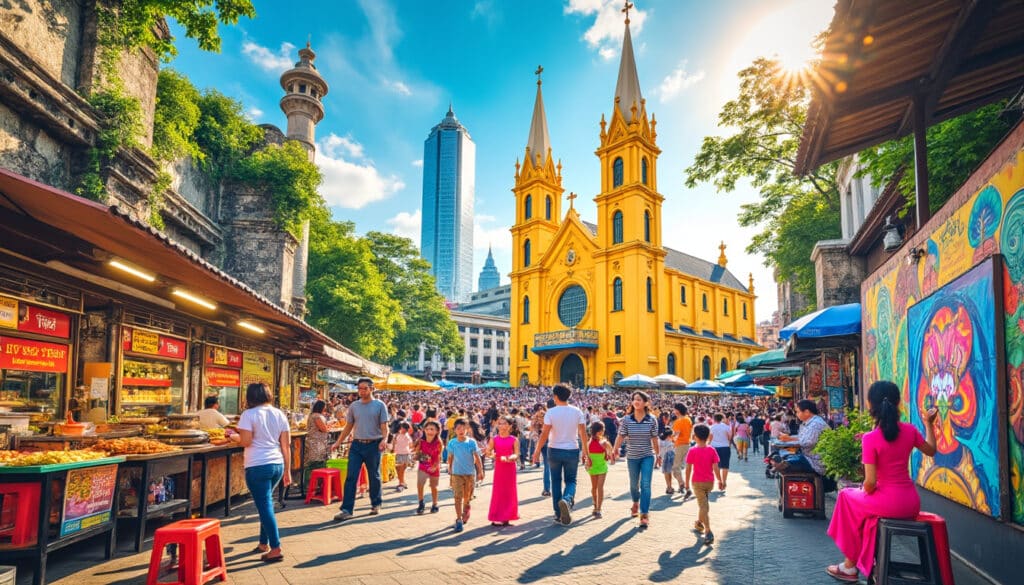
Fun Facts & Curiosities About Ho Chi Minh
Ho Chi Minh City, also known by its former name Saigon, is not just a bustling modern metropolis but a city filled with curious contrasts and intriguing historical narratives. From its storied past as the capital of South Vietnam to…
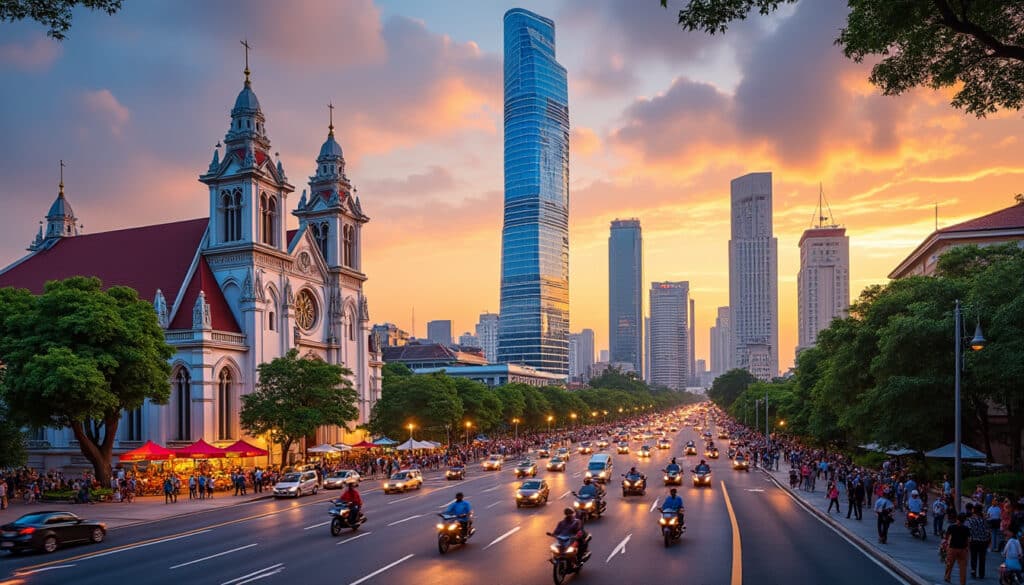
Architecture and urban features of Ho Chi Minh
Ho Chi Minh City, the bustling economic heart of Vietnam, is a captivating blend of the old and the new, a testament to its ever-evolving architectural landscape. From its historical roots as Saigon, with traditional Vietnamese and French colonial influences,…
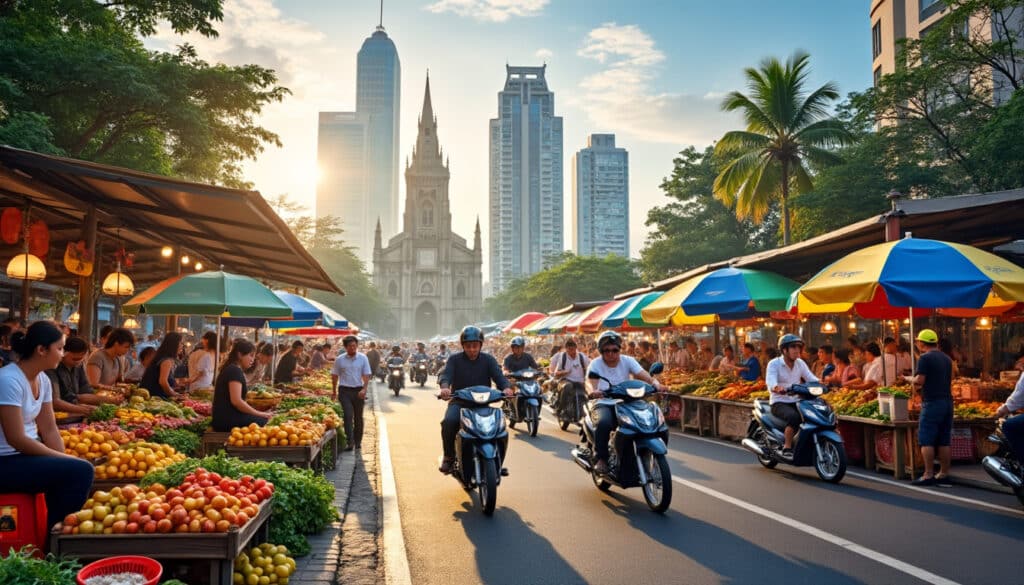
Ho Chi Minh City, once known as Saigon, is a vibrant and bustling metropolis that captures the essence of a city constantly on the move. Life here hums with an eclectic mix of tradition and modernity, where the past and…

Demographics and geography of Ho Chi Minh
Ho Chi Minh City, formerly known as Saigon, stands as a vibrant testament to Vietnam’s blend of tradition and modernity. Nestled between the fertile lands of the Mekong Delta and the bustling southeast, it pulsates with life and energy. As…
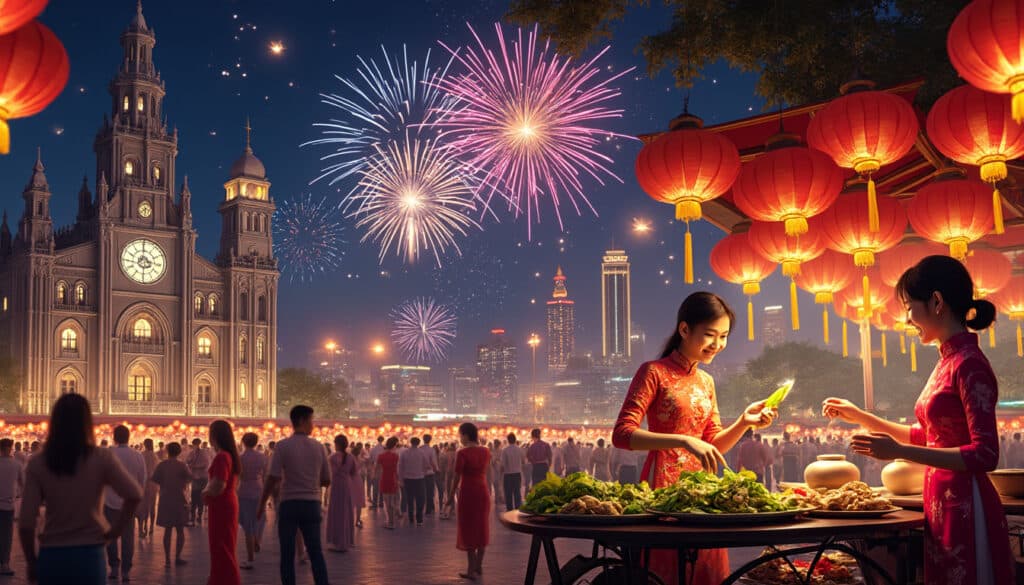
Holidays and celebrations in Ho Chi Minh
Ho Chi Minh City, with its rich tapestry of cultural influences and historical significance, stands as a beacon of celebration in Vietnam. Here, traditions old and new intermingle, creating a vibrant landscape of festivities. From the pulsating energy of the…

Language and spelling of Ho Chi Minh
In the bustling streets of Ho Chi Minh City, language serves as both a bridge and a barrier. The city’s unique linguistic landscape, a product of its rich history and rapid modernization, reflects the dynamic interplay between tradition and change.…
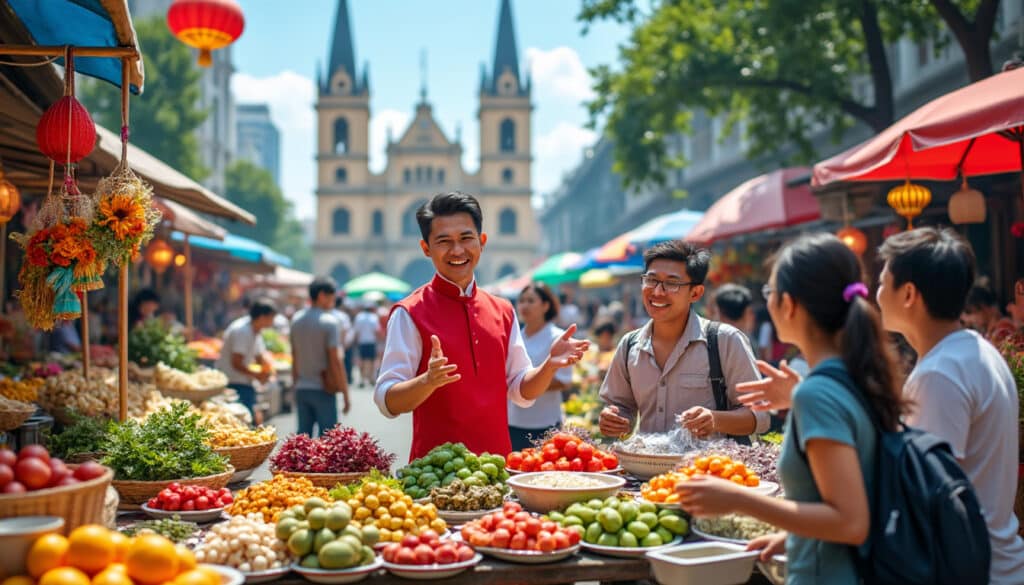
Local tips for tourists in Ho Chi Minh
Ho Chi Minh City, a bustling metropolis teeming with energy, is a gem in Southeast Asia that offers an intoxicating blend of history, culture, and modernity. From its vibrant street markets and delicious street food to its historical sites and…
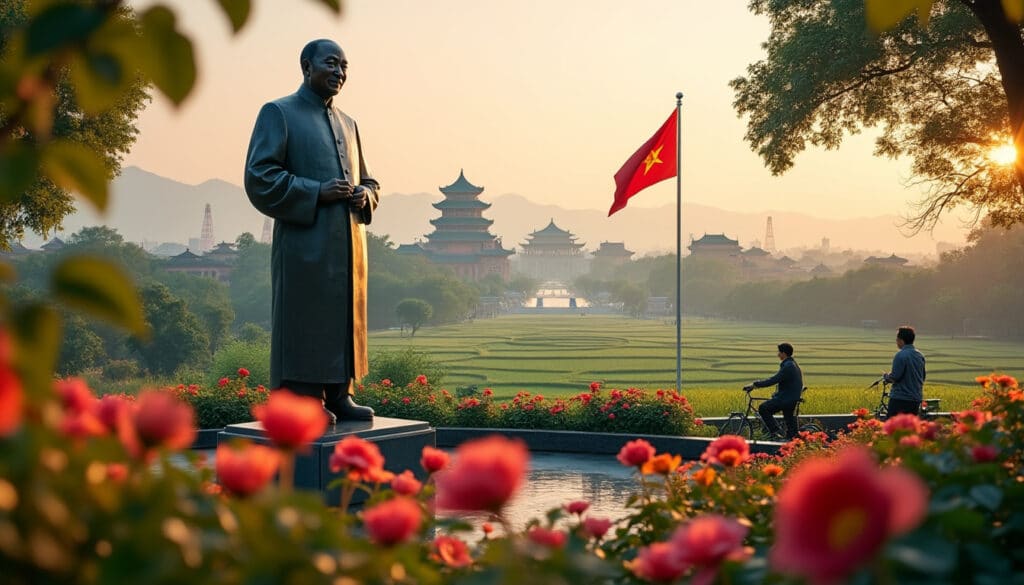
Reputation and identity of Ho Chi Minh
In the heart of Vietnam, the legendary figure of Ho Chi Minh continues to captivate minds, dominating discussions related to national identity and the nation’s storied past. An icon of resilience and strategic acumen, his image is immortalized in everything—from…
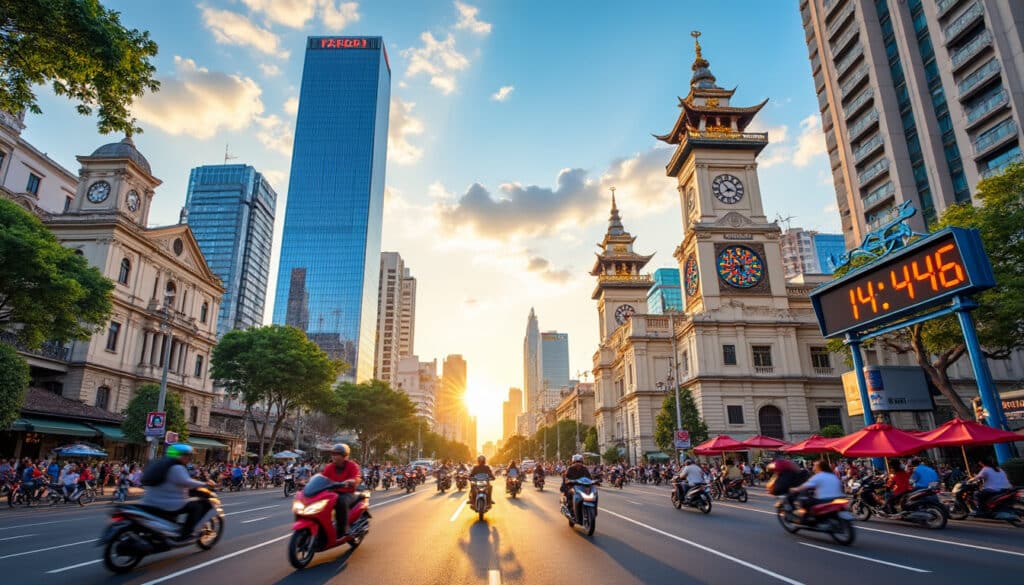
Time and time zone in Ho Chi Minh
Ho Chi Minh City, a bustling metropolis in Vietnam, is a city that never sleeps, where the hum of scooters is the soundtrack to daily life and the aroma of strong coffee permeates the air. It’s a place where time…
Unusual facts and social issues in Ho Chi Minh
Ho Chi Minh City, often referred to as Saigon, is a vibrant metropolis teeming with history, culture, and an array of fascinating quirks. Despite its rapid modernization, the city retains an intricate blend of past and present, where unique facts…
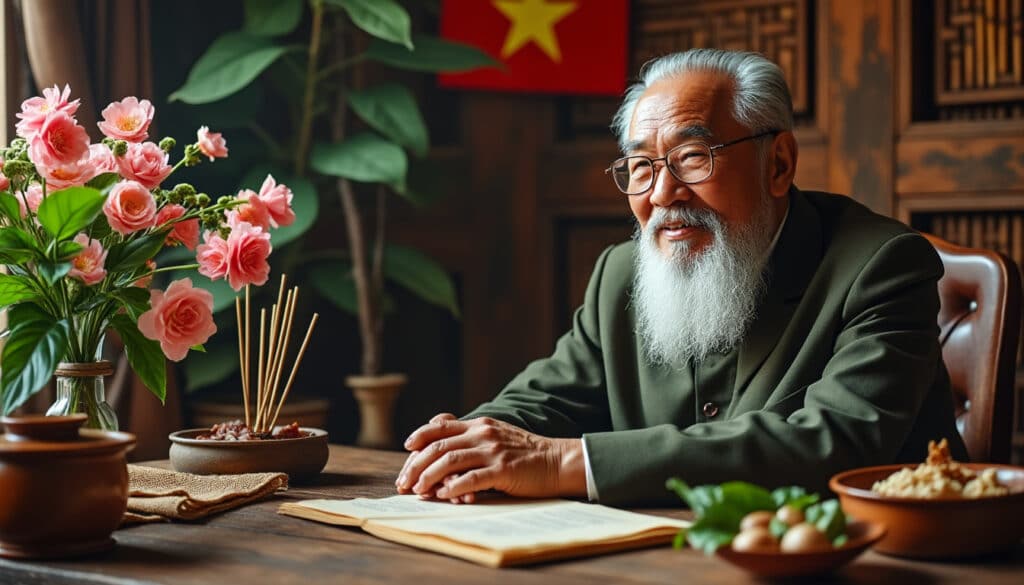
What does Ho Chi Minh look, smell, feel like?
Ho Chi Minh City, often referred to as Saigon, is a bustling metropolis in southern Vietnam that offers an unparalleled sensory experience. From the sleek skyline that reflects its modern aspirations to the fragrant aromas that fill the vibrant streets,…


